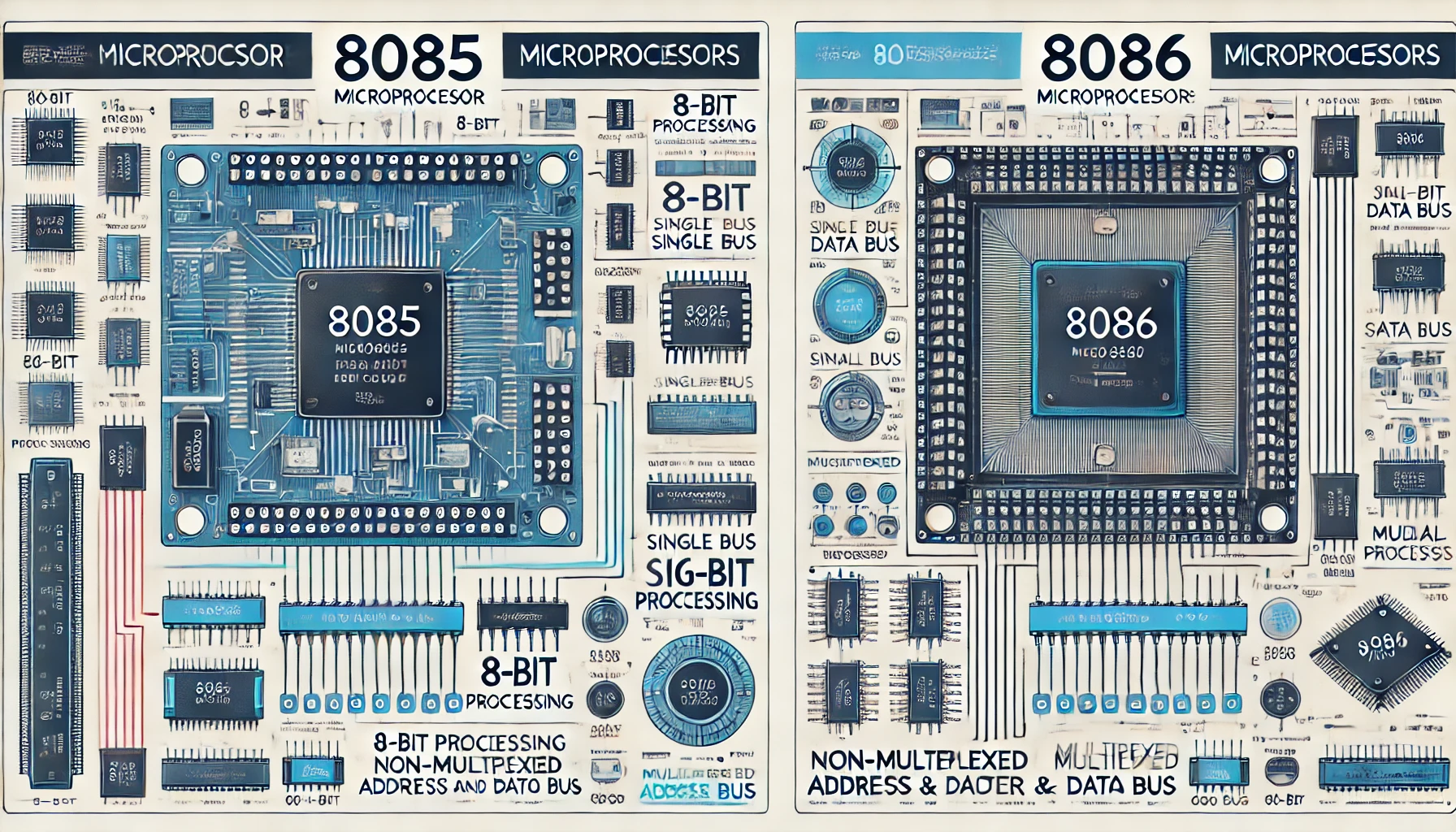Although Intel produced both the 8085 and 8086 microprocessors, their architectures differ, and they are utilized in various kinds of applications.
A microprocessor is a single integrated circuit (IC) or chip that houses a central processing unit (CPU). It is a computer system’s brain, carrying out arithmetic and logical functions as well as executing instructions.
Microprocessors are vital parts of many electronic gadgets, such as embedded systems, computers, and cellphones.
ARM, AMD, Intel, and other well-known processor makers are among them. Microprocessors are always evolving to provide better performance, efficiency, and capabilities as technology progresses.
8085 Microprocessor
The Intel 8085 is an 8-bit microprocessor, a type of central processing unit (CPU) that is designed to process 8 bits of data at a time. In 1976, Intel Corporation unveiled it as an advancement over the 8080, its predecessor. The 8085 became popular for various applications, including embedded systems, educational purposes, and simple computing devices.
Here are some key features and components of the 8085 microprocessor:
- Architecture: Because of its 8-bit architecture, the 8085 processes data in chunks of 8 bits.
- Registers: The accumulator (ACC) and other general-purpose registers (B, C, D, E, H, and L) are among the registers that make up the microprocessor.
- Address bus: It can access up to 64 KB of memory because of its 16-bit address bus.
- Data bus: The 8085 can send eight bits of data at once because it has an 8-bit data bus.
- Clock Speed: The 8085 microprocessor has a variable clock speed, but typical frequencies fall into the range of a few megahertz.
8086 Microprocessor
Intel developed the 8086 microprocessor, a 16-bit microprocessor, in the late 1970s. It is a member of the x86 processor family, which is now among the most popular in the computing sector.
When it was first released in 1978, the 8086 had a big impact on how personal computers developed.
The following are some of the 8086 microprocessor’s key characteristics:
- Architecture: As a 16-bit microprocessor, the 8086 processes information in 16-bit segments. Compared to 8-bit computers, this enables more comprehensive memory-addressing capabilities and more effective data manipulation.
- Registers: Data registers (AX, BX, CX, DX), segment registers (CS, DS, ES, SS), and index registers (SI, DI, BP, SP) are among the 16-bit registers available on the 8086.
- Address bus and memory: With its 20-bit address bus, it can access memory up to 1 megabyte (MB). The memory is divided into parts, each of which can store 64 KB of data.
- Instruction set: A large variety of instructions for arithmetic, logic, data transmission, and control functions are supported by the 8086’s sophisticated instruction set. It contains guidelines for both 8-bit and 16-bit operations.
- Modes: Real mode and protected mode are the two operating modes that the 8086 offers. It functions as a 16-bit CPU in real mode and offers multitasking and enhanced memory protection in protected mode.
8085 vs 8086
Here are some basic differences between the 8085 and 8086 microprocessors:
| Features | 8085 microprocessors | 8086 microprocessors |
| Architecture | It has 8-bit | It has 16-bit |
| Registers | 8-bit registers (e.g., Accumulator) | 16-bit registers (e.g., AX, BX, CX, and DX) |
| Address bus | The size is 16-bit | Size is 20-bit |
| Data bus | Size is 8-bit | Size is 16-bit |
| Memory addressing | Up to 64 KB | Up to 1 MB |
| Instruction set | It has a simple instruction set | Has a simple instruction set |
| Modes | Single mode | Real mode and Protected mode |
| Applications | Simple embedded systems, education | Single-mode |
| Introduction year | Introduced in 1976 | Introduced in 1978 |


